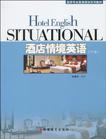酒店情境英语(下)
出版时间:2010-3 出版社:旅游教育出版社 作者:赵晓芳 页数:156
内容概要
在贯彻国家“以应用为目的,实用为主,够用为度”的教育方针的前提下,酒店专业英语既要培养学生具备必要的英语语言知识,也应强调培养学生运用英语进行有关涉外业务工作的能力。社会对学生的就业要求从注重知识转向了注重技能.因此我们的教学方法也应该从注重教师的教而转向注重学生的学,引导学生自主地学习,创设良好的语言环境,为学生营造一个能够进行语言交流的平台。 随着国际间交流不断增多,英语已经不再是对高层次人才的特殊要求,已经成为了进入旅游行业的“敲门砖”。而就是这块“敲门砖”,在酒店专业学生就业中,反而成了职业的“门槛”,阻碍了许多毕业生寻求更好的职业发展。酒店服务与管理专业的学生将要面对的是与外宾的面对面服务,他们除了要具备良好的专业技能,更重要的是要有较好的听说能力。把语言真正作为一种交流的工具应用于今后的日常工作中。因此,越来越多的星级涉外酒店把学生的外语能力当做一个重要的用人标准。 《酒店情境英语》就是为顺应酒店行业的需要,吸取情境教学、个性化教学、交际教学以及快乐教学等现代教学理念的精髓,注重培养学生的跨文化交际能力、注重在情境中展现新知识、在交际中融入新知识、注重鼓励展现自我。教程倡导以学生为中心把课堂营造成微型的酒店英语世界,给学生提供最大程度的实践机会,提倡任务型学习,鼓励合作学习方式。全书坚持以听说带动读写、精讲多练的教学思想,旨在全面提高学生的语言交际能力。 本教程按照酒店服务与管理的现实需要以及专业教学课时安排,分上、下两册编排四大核心内容,即前厅部、客房部、餐饮部及其他服务与管理。每个部分又由多个单元组成,上下两册共有24个单元:上册包含前两部分1~13单元的内容;下册包含后两部分14~24单元的内容;同时,下册还收录了与酒店服务管理工作、特别是与餐饮部门密切相关的6个英汉对照实用附录,分别为:“基本餐具名称”、“调味品”、“常见的蔬菜、水果及坚果”、“烹调术语”、“常见西餐菜名”和“精选酒水牌”。
书籍目录
饭店及其分类Part One 饭店部 Lead-in Reading Unit 14 预订业务 Unit 15 早餐 Unit 16 点餐 Unit 17 中餐菜点 Unit 18 酒吧 Unit 19 西餐菜点 Unit 20 厨房 Unit 21 客人投诉Part Four 其他服务与管理 Lead-in Reading Unit 22 健身中心 Unit 23 购物中心 Unit 24 酒店管理附录 附录1 基本餐具名称 附录2 调味品 附录3 常见的蔬菜、水果及坚果 附录4 烹调术语 附录5 常见西餐菜名 附录6 精选酒水牌
章节摘录
Our school was built in 1974 and a great number of students have graduatedfrom it. Now many of them have become professors, engineers and managers. Manystudents have also become white-collar workers and managers after graduation. Theyhave achieved great success in the development of modern hospitality industry. Our school is a key college in our province. It has a hundred classes with over5000 students. Our school has a six teaching buildings, several training centers,laboratories and a large playground. Last year, a new library was built and it hasmore than 20,000 volumes. All the teachers here are trying their best to do their work well. Every student ismaking full use of his time to train himself to be a highly educated and qualified bythe time he/she graduates. Menu planning is important from two points of view: the owners profit and thecustomers pleasure. The cost of the food that the restaurant purchases must be low enough to make itpossible to return a profit on the prices charged for the prepared dishes. Those whoplan menus must be aware of these price differences. A restaurant may serve a dishthat is ve~ popular, but if the cost of the food used in making is too high, therestaurant can either omit the dish from the menu or charge more for it. Pleasing the customers is usually described as merchandising, or making aproduct interesting so that customers will buy it. The restaurants appearance,location, and cuisine must be designed to appeal to a particular and availableclientele.
图书封面
评论、评分、阅读与下载
用户评论 (总计1条)
- 很多情景都列进去了,比较实用的
